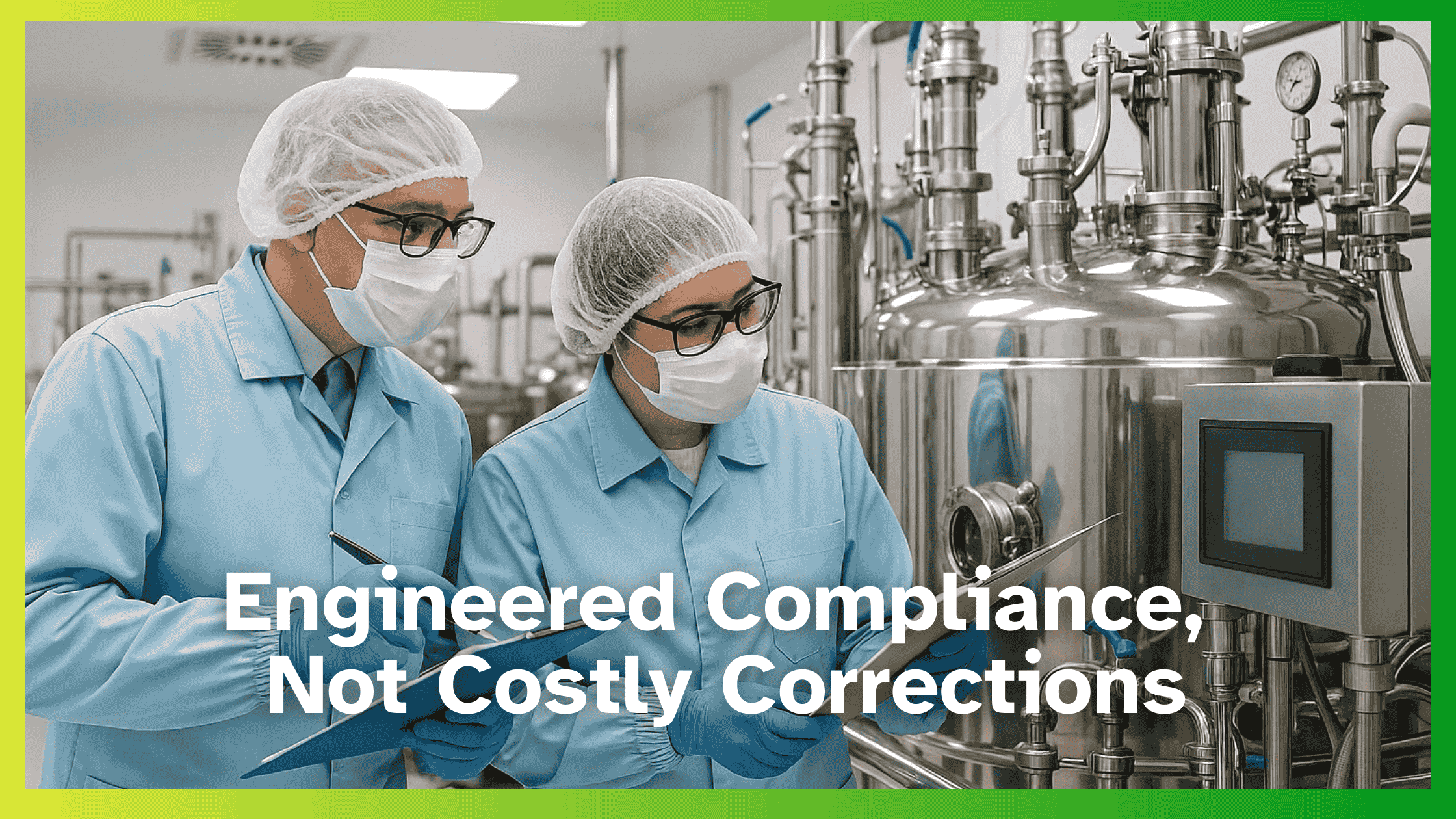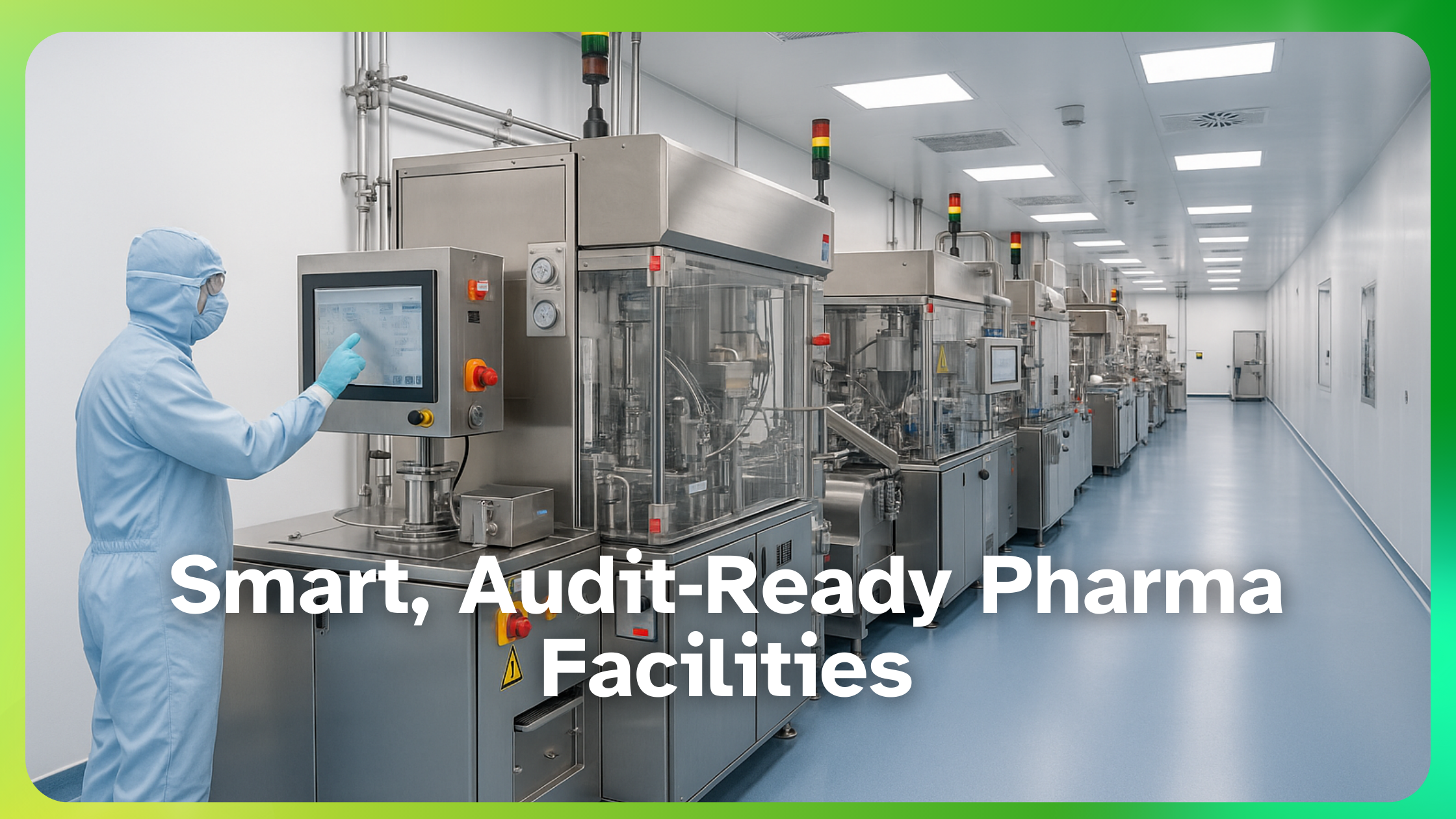Publisher
India Pharma Outlook
published at
April 3, 2025
Engineering & Regulatory Affairs: FDA Guidelines for Pharmaceutical Construction
Pharmaceutical construction projects often face delays and compliance hurdles despite their extensive planning and preparation. The intricate relationship between engineering and regulatory affairs requires strict adherence to FDA guidelines for seamless approval. Companies in the pharmaceutical construction sector must align with regulatory standards from project initiation to completion to prevent costly modifications and regulatory penalties.
The below article highlights key regulatory requirements, the significance of FDA guidelines, and strategies to ensure efficient compliance. It offers insights for pharmaceutical stakeholders and construction firms on how engineering teams and regulatory specialists can collaborate to maintain FDA compliance while optimizing project execution.
Understanding Regulatory Affairs in Pharma-Construction Project Management
In pharma-construction project management, regulatory affairs play an important role in ensuring FDA compliance, operational efficiency, and risk mitigation. A proactive regulatory strategy from project inception helps prevent costly delays, ensure quality control, and accelerate approvals. For pharmaceutical companies and engineering firms, aligning with evolving compliance standards is essential for seamless project execution.
The Importance of Regulatory Affairs in Pharma Construction
For pharmaceutical companies and pharma-construction project managers, regulatory affairs are indispensable. Ensuring FDA compliance from the ground up prevents costly reworks, mitigates regulatory risks, and streamlines the approval process. Companies like Inotek and others in the pharmaceutical engineering space recognize that early regulatory integration is crucial for smooth project execution.
Good Manufacturing Practice (GMP) guidelines form the foundation for regulatory compliance in pharma construction. These guidelines dictate facility design, monitoring, and operational controls to uphold stringent quality and safety standards required both nationally and globally.
Overview of FDA's Role in Pharmaceutical Construction
The FDA establishes and enforces guidelines to ensure pharmaceutical facilities maintain the highest safety and quality standards. These regulations cover:
- Facility layout and material selection to prevent contamination
- HVAC and environmental controls for air filtration and sterile conditions
- Validation processes and compliance documentation to meet GMP and cGMP standards
Essential FDA Guidelines for Construction Projects
Key FDA requirements that pharmaceutical construction companies must follow to include:
- Facility Layout: Design that prevents contamination and ensures workflow efficiency. Cleanroom classifications must comply with ISO 14644 standards to maintain controlled environments.
- Material Selection: Using non-reactive, easily cleanable surfaces such as stainless steel and epoxy coatings to avoid contamination risks.
- HVAC Systems: Stringent control over air filtration and temperature regulation to prevent cross-contamination and ensure a sterile environment.
- Validation Processes: Comprehensive testing and documentation before operations commence. Facility validation must follow the ICH Q7 guidelines for active pharmaceutical ingredients (APIs) and process validation.
The Link Between Regulatory Affairs & Engineering Success
Engineering teams working in pharma-construction must integrate regulatory requirements to ensure seamless FDA compliance. Successful projects involve close collaboration between engineering and regulatory professionals to mitigate risks and expedite approvals.
FDA guidelines emphasize that engineering and regulatory teams must work together from project inception to final validation. According to the FDA Guidance on Quality Systems Approach, engineering teams should integrate design controls, validation procedures, and risk management strategies early in the construction process to ensure compliance.
Pharmaceutical construction companies must also navigate quality challenges, such as ensuring process validation, equipment qualification, and facility compliance. The International Society for Pharmaceutical Engineering (ISPE) notes that regulatory oversight extends beyond construction and requires ongoing collaboration between engineering, validation, and regulatory teams to address compliance gaps proactively.
To mitigate risks and streamline approvals, engineering teams should:
- Incorporate regulatory feedback into project planning.
- Ensure risk-based qualification of all critical systems.
- Use digital compliance tracking to maintain documentation accuracy.
- Conduct simulated regulatory inspections before project completion.
Achieving FDA Compliance in Pharmaceutical Construction
Ensuring FDA compliance in pharmaceutical construction is critical to safeguarding public health and maintaining regulatory approval. Adhering to stringent FDA regulations not only enhances their operational efficiency but also mitigates the risks of some very costly violations and delays.
Good Manufacturing Practices (GMP)
GMP guidelines set the industry standard for pharmaceutical manufacturing and facility construction. The focus should be on:
- Controlled environments to uphold drug purity.
- Comprehensive validation and documentation across all production stages.
- Systematic quality control checks to ensure regulatory adherence.
Quality System Regulations
The Quality System Regulations (QSR) established by the FDA mandate the implementation of well-defined quality management systems. These regulations ensure that pharmaceutical companies maintain stringent control over their processes, facilities, and materials to meet regulatory expectations.
- Risk assessment protocols to prevent non-compliance.
- Corrective and preventive actions (CAPA) to address deficiencies.
- Routine inspections and reporting to maintain compliance status.
Steps to Ensure Compliance in Construction
Achieving and maintaining FDA compliance in pharmaceutical construction requires a proactive approach that involves continuous monitoring, validation, and adherence to regulatory expectations.
To avoid compliance setbacks, pharma construction firms should:
- Engage regulatory specialists in the initial planning stages.
- Conduct pre-construction audits to identify compliance gaps.
- Implement real-time compliance monitoring during construction.
- Maintain detailed regulatory documentation for FDA inspections.
Common Pitfalls and How to Avoid Them
Failure to adhere to FDA guidelines can lead to regulatory actions, financial losses, and operational disruptions. To prevent non-compliance, pharmaceutical construction firms must recognize and address common pitfalls, including:
- Insufficient Documentation: Keep meticulous compliance records.
- Design Inconsistencies: Align construction with FDA regulations from the start.
- Overlooking Equipment Validation: Ensure all installed systems meet FDA standards before operation.
Challenges and Solutions in FDA Compliance
Pharmaceutical companies and construction project managers face a number of hurdles when striving for FDA compliance. The complexity of regulatory frameworks, evolving standards, and stringent inspections require strategic planning and proactive adaptation to maintain compliance without disrupting operations.
Common Challenges in Compliance
Regulatory compliance in pharmaceutical construction involves dynamic challenges that require constant vigilance. Common issues include:
- Frequent updates to regulatory standards.
- Unexpected delays due to non-compliant designs.
- Budget constraints associated with strict compliance measures.
Practical Solutions and Strategies
To overcome compliance obstacles, companies should integrate best practices that align engineering and regulatory teams with FDA standards. These strategies include:
- Use digital compliance tools for real-time regulatory tracking.
- Invest in regulatory training programs for project managers and engineers.
- Form cross-functional compliance committees to oversee all phases of construction.
Impact of Regulatory Compliance on Project Timelines and Costs
Regulatory compliance plays a big role in keeping construction projects on track and within budget. Companies that plan for compliance from the start can avoid expensive delays and legal issues.
Efficient regulatory compliance strategies ensure that pharmaceutical construction projects remain on schedule and within budget.
The following sections highlight key impacts:
Influence on Project Schedules
Delays in obtaining regulatory approvals can significantly extend project timelines. Implementing compliance checks at each stage helps prevent bottlenecks, keeping projects aligned with planned schedules. Early regulatory engagement helps reduce unexpected project delays and ensures streamlined execution.
Managing Costs Associated with Compliance
Failure to adhere to compliance requirements can result in expensive modifications and fines. Allocating resources for continuous compliance monitoring and risk management reduces unexpected financial strains. Strategic planning, regular audits, and proactive compliance management can significantly reduce unnecessary expenditures.
How Inotek Ensures Seamless FDA Compliance in Pharma Construction
Inotek is a trusted name in pharma-construction project management, seamlessly integrating regulatory compliance into its engineering processes. With a structured approach, the company ensures every phase—from facility design to process validation—meets FDA standards, reducing last-minute modifications and expediting approval timelines.
How Inotek Ensures Compliance:
- Stays Updated on Regulations – Keeps up with the latest FDA requirements so projects don’t fall behind.
- Expert Guidance & Risk Management – Spots potential compliance issues early to prevent expensive delays.
- Thorough Testing & Validation – Ensures facilities are fully prepared and compliant before operations begin.
By focusing on quality and efficiency, Inotek helps pharma companies build cutting-edge, FDA-approved facilities faster and with fewer risks. Choosing Inotek means a smooth, hassle-free construction process from start to finish!
FAQs
What are the Key Roles of Regulatory Affairs in Engineering Projects?
Regulatory affairs ensure engineering projects comply with FDA guidelines, reducing risks and approval delays. They oversee facility design, process validation, and documentation, ensuring adherence to Good Manufacturing Practices (GMP). By collaborating with engineers, they help integrate compliance from project initiation, minimizing costly reworks and ensuring regulatory approval.
How FDA Guidelines Affect Pharma-Construction Project Timelines?
FDA guidelines impact project schedules by requiring rigorous design controls, equipment validation, and quality assessments. Delays often times arise due to non-compliance, necessitating redesigns or additional approvals. Engaging regulatory experts early, conducting pre-construction audits, and maintaining real-time compliance monitoring help prevent setbacks and keep timelines on track.
Biggest Challenges in Achieving FDA Compliance?
Majority of the challenges include keeping up with frequent regulatory updates, managing complex documentation, and meeting strict FDA facility validation standards. Budget limitations and unexpected design non-compliance can also slow down approvals. To tackle these issues, companies need proactive compliance tracking, strong teamwork across departments, and ongoing regulatory training for project managers and engineers.
How Can Engineering Teams Streamline FDA Compliance Processes?
Engineering teams can integrate design controls, risk assessments, and process validation from the project’s inception. Using digital compliance tools, conducting mock audits, and engaging regulatory specialists ensures smoother approvals. Standardizing quality assurance measures and maintaining detailed compliance documentation significantly reduce risks and delays in FDA-regulated projects.




